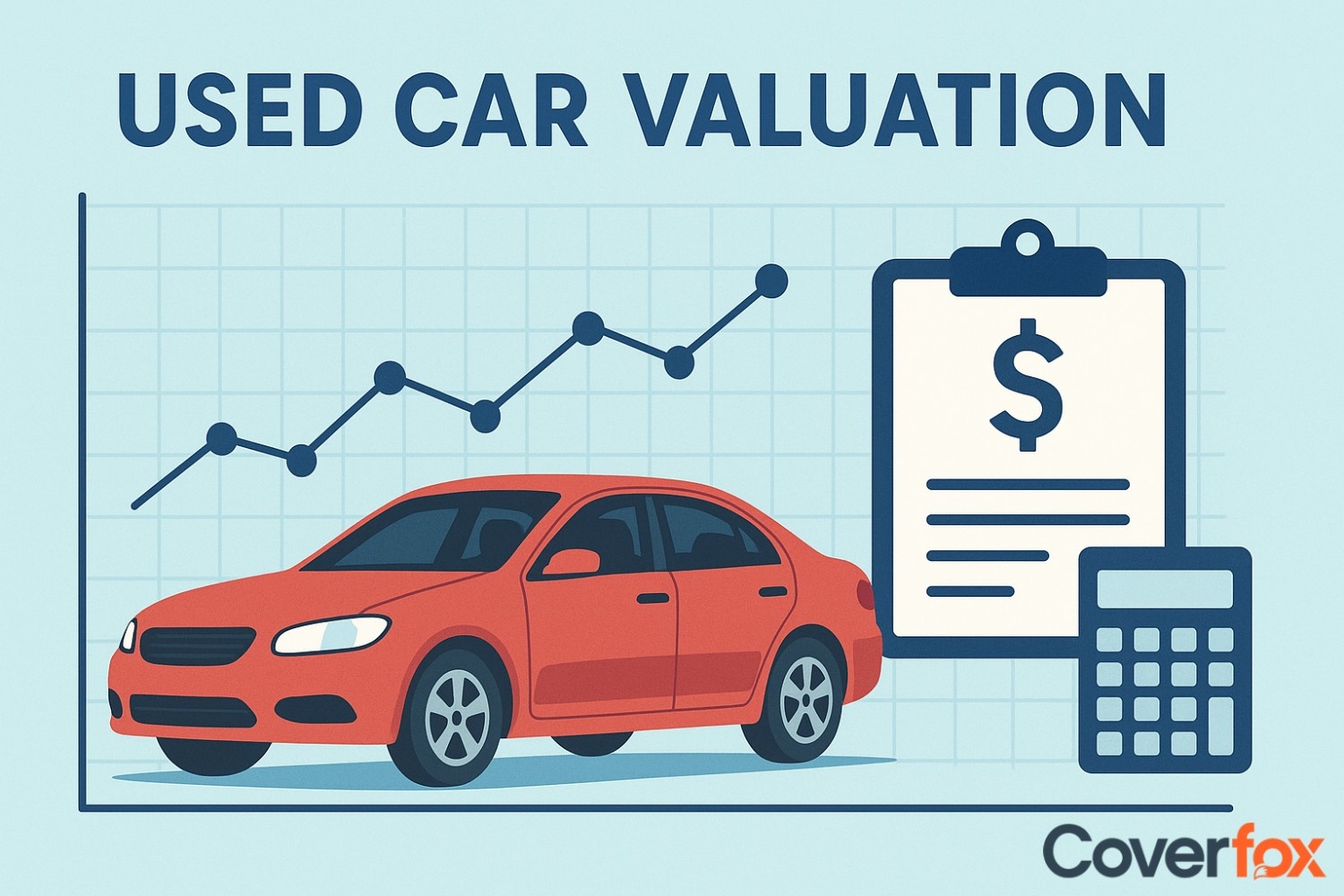Buying a car as a valuable asset is a dream for many – but it is a depreciating asset. Meaning? If you are going to resell your car, it will not fetch the same amount you purchased it for (with a few exceptions like vintage cars). In case if you wish to sell your car, you need to reevaluate the pricing of your car, based on various factors like age, condition, customisations, etc. In FY 2025, about 5.6 million used cars were sold in India. In this article, you will understand how to calculate and evaluate a used car for resale.

Used Car Valuation is the process of determining the current market value of a pre-owned vehicle based on factors like its make, model, variant, age, mileage, condition, fuel type, accident history, number of previous owners, and prevailing market demand. This valuation helps both buyers and sellers arrive at a fair price during a resale transaction. As the car leaves the dealership, it loses its monetary value in depreciation. In India, used car valuation is often done using online car valuation tools, dealer assessments, or professional evaluators. It is especially important because prices for second-hand cars vary widely depending on region, supply and demand, and the specific condition of the vehicle. Accurate valuation protects buyers from overpaying and ensures sellers get a fair return.
When it comes to determining the fair price of a second-hand car, several key factors influence its valuation. Here are the most important ones:
Newer cars generally have a higher resale value, while older cars depreciate faster, depending on the condition of the car.
Lower mileage indicates less wear and tear, leading to better valuation compared to high-mileage vehicles.
Diesel and CNG cars may have different resale values compared to petrol cars, depending on demand and running costs.
Cars with fewer owners are valued higher than those that have changed hands multiple times. Similarly, every year the car loses its monetary value as depreciation, and it is calculated based on a year (For example, a car bought in December 2024 will depreciate its value by a year in January of 2025 even though it is just been a month).
Popular models with high demand in the second-hand market tend to sell at better prices, although it may depend on the location of the car as well (city or rural, states, countries, etc).
You can check the price of a used car online through digital valuation tools available on popular car portals and insurance websites. These tools calculate the fair market value of a vehicle based on the above-mentioned factors. Some platforms also consider the car’s overall condition, accident history, and ownership details to refine the estimate. By entering these details, you receive an instant price range that reflects the current resale market. This process is quick, free, and equips both buyers and sellers with the confidence to negotiate better by knowing the realistic worth of a second-hand car.
Depreciation is the natural decline in a car’s value over time and is one of the most important factors in used car valuation. Every year, a vehicle loses a certain percentage of its original price, depending on age, brand reputation, usage, and condition. Here’s how depreciation affects valuation:
A brand-new car typically loses 20–30% of its value in the first year after purchase.
Within 3 to 5 years, most cars lose around 40–50% of their original value, making this period the steepest depreciation phase.
The depreciation curve slows down, and the annual drop becomes smaller, usually around 10% or less per year.
Well-maintained cars, popular models, and brands with strong resale demand tend to hold their value better.
If a car is bought for ₹10 lakh, its value may fall to ₹7–8 lakh after the first year. By the 5th year, it might be worth only ₹5–6 lakh, depending on mileage and condition. This demonstrates how depreciation impacts resale price and why it’s important for buyers and sellers to account for it in negotiations
*Note: These numbers are just speculative estimates, real value and percentages may differ as per model, condition, demand and various other factors.
Maximising your car’s value at the time of resale requires proper execution with calculated steps:
Follow the manufacturer’s service schedule, use authorised service centres, and keep records of all servicing and repairs to show buyers your car is well-maintained.
Fix dents, scratches, and paint issues promptly, and keep the interiors clean and odour-free, as first impressions significantly impact resale value.
Avoid rash driving and overloading the car, as smoother usage leads to fewer mechanical issues and better long-term performance.
High mileage reduces valuation, so use the car judiciously and avoid unnecessary long trips if you are planning to sell your car.
Keep your registration certificate (RC), insurance papers, PUC certificate, and service records updated, as missing documents can lower the car’s value.
Selling before the car crosses major depreciation milestones (like the 5th or 7th year) helps secure a better price.
Used car valuation directly impacts your car insurance premium and claim settlement. Insurers calculate the Insured Declared Value (IDV), which is the current market value of the car after depreciation. A lower IDV reduces your premium but also lowers the maximum claim amount. For instance, a car bought for ₹7 lakh may have an IDV of ₹4.5 lakh after three years, which is what the insurer will pay in case of total loss. In short, your car’s valuation decides how much you pay for insurance and how much you can claim.
You can use online car valuation tools or consult dealers to get an accurate estimate of your vehicle’s market price.
It depends on the buyer – while most modifications do not fetch higher prices, as people prefer factory-set cars, certain modifications like quality speakers or woofer systems definitely add as an attractive feature.
A well-maintained car with no major damages or repairs commands a higher resale value.
It is the price a car can fetch in the used car market based on age, mileage, condition, and demand.
Insurance premium is based on the Insured Declared Value (IDV), which reflects your car’s current market value.
No, the insurer pays the IDV, not the original purchase price.
They calculate it using depreciation rates, car age, and current market trends.
Yes, high mileage reduces the car’s valuation, indirectly lowering your IDV and insurance premium.
Used car prices are updated regularly based on market trends, usually every few months.





















